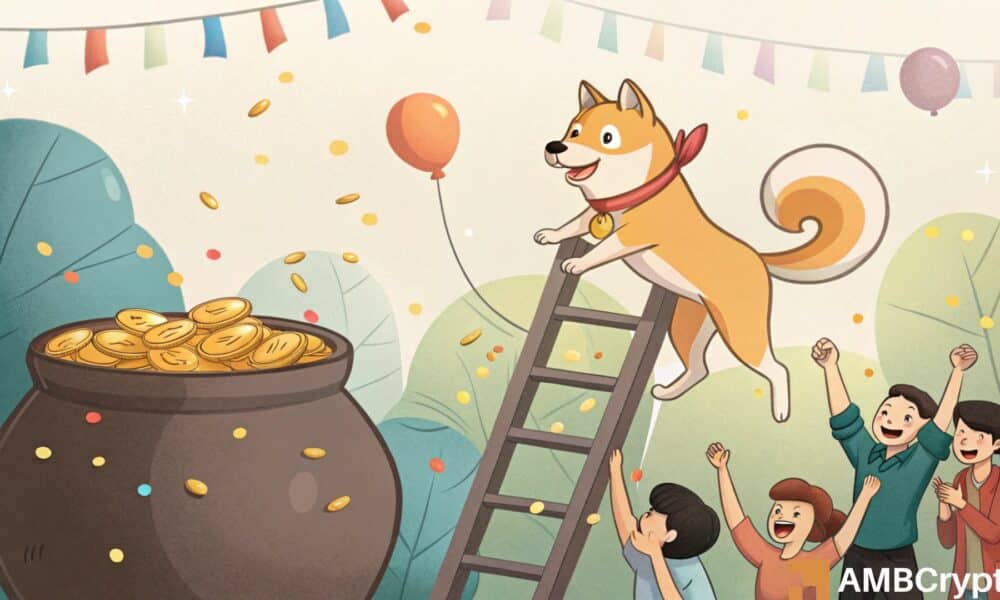What began as a poke at the absurdity of crypto has become a phenomenon in its own right. Dogecoin’s transformation from a simple meme into an asset worth billions makes a mockery of old-school financial wisdom.
Let’s dig into the coin’s guts, check out its beef with Shiba Inu, and explore the wild idea of it ever reaching one dollar.
The joke that landed
Back in 2013, programmers Billy Markus and Jackson Palmer cooked up Dogecoin to mock the wild speculation in crypto. They wanted to create something fun and accessible. So, they chose the Internet-famous Shiba Inu “Doge” as its mascot.
Against all odds, the joke caught on. A passionate community, the self-proclaimed “Doge Army” rallied around the coin, funding everything from clean water projects to sponsoring a NASCAR driver. Their energy pushed Dogecoin into the public eye in a way most serious projects could only dream of.
Then 2021 happened, and things got truly strange. Elon Musk’s casual tweets about the coin sent its value into orbit. The so-called “Dogefather” effect pushed the price to a staggering $0.74, briefly giving the memecoin a market cap of over $85 billion.
For example – When Musk tweeted “Dogecoin is the people’s crypto” and later, “I am become meme, Destroyer of shorts,” the crypto surged by 60% on the charts. Similarly, an SNL skit starring Musk had the opposite effect on the memecoin.
DOGE’s tokenomics
Technically, Dogecoin is an offshoot of Litecoin, which itself was a spin-off of Bitcoin. It runs on a proof-of-work system, meaning powerful computers, or “miners” race to solve math puzzles to verify transactions. Winners of the race get a prize of freshly minted Dogecoin.
Dogecoin uses a different puzzle-solving language called Scrypt, setting it apart from Bitcoin’s SHA-256. The original idea behind Scrypt was to keep mining democratic, preventing huge, specialized operations from dominating the network.
Here’s a crucial twist – There is no limit to how much Dogecoin can exist. Bitcoin has a famous 21 million coin cap, but DOGE is designed to be inflationary. Every minute, a new block adds 10,000 DOGE to the pile, which adds up to over 5 billion new coins a year. People like Musk believe this constant flow encourages people to use it as money rather than just stashing it away.
An unlikely alliance with Litecoin
Dogecoin’s relationship with Litecoin is more than just a shared ancestry. A clever trick called “merged mining,” introduced in 2014, lets miners work on both coins at the very same time.
Because they both use the Scrypt system, miners can lend their processing muscle to both chains simultaneously, earning rewards from each. This setup gives Dogecoin a huge security boost by piggybacking on Litecoin’s network, while Litecoin miners pocket some extra DOGE on the side.
Serious plans for a joke coin
Don’t mistake the funny dog for a lack of ambition. A team of developers, guided by the recently revived Dogecoin Foundation, is actively working on the coin’s future.
The biggest conversation on the table involves a major system overhaul. There’s a serious push, with backing from people like Ethereum’s Vitalik Buterin, to shift away from its power-guzzling mining setup to a much more eco-friendly proof-of-stake model.
Enter the “Dogecoin Killer”
With Dogecoin’s fame came a challenger – Shiba Inu (SHIB). It arrived in 2020 with the bold claim of being the “Dogecoin killer,” promising a bigger and better dog-themed world.
However, these two pups are different breeds. Dogecoin is its own standalone currency with its own network. Shiba Inu, on the other hand, is a token that lives on the Ethereum blockchain. That home address allows SHIB to tap into Ethereum’s powerful smart contract technology, letting it build a whole ecosystem with things like a decentralized exchange and a scaling network called Shibarium.
Their financial philosophies also clash. Dogecoin’s supply is endless, while Shiba Inu began with a fixed, astronomical number of tokens and has a strategy of “burning” or destroying them to make the remaining ones more scarce.
The steep climb to $1
The million-dollar question—or rather, the $140 billion one—is whether Dogecoin can ever hit $1. Hitting that milestone would require a market cap that rivals some of the biggest companies on the planet.
Those who think it’s possible are betting on its die-hard community, undeniable brand power, and the wildcard that is Elon Musk. Growing acceptance as a payment method and whispers of a Dogecoin ETF have also fueled this optimism.
Skeptics have a strong case too. The constant creation of new coins acts like an anchor on the price. Critics say the coin lacks any real-world use case beyond speculation, leaving it at the mercy of social media whims and celebrity shout-outs.
At the time of writing though, the memecoin was far from the $1-mark on the charts. In fact, it was valued at $0.24 following a brief hike over the last few days. Thanks the the same, the crypto’s indicators were on the cusp of turning bullishly. This was evidenced by the findings of both the MACD indicator and the Moving Average.

Source: TradingView
Worth pointing out though that the memecoin is still well off its levels from December 2024. Let alone the $1-level.
Riding the world’s economic waves
Dogecoin doesn’t live in a bubble. Its price gets tossed around by the same big economic forces as everything else, from inflation stats to the latest interest rate hike.
When investors feel bold and ready to gamble on speculative bets—a “risk-on” mood—joke coins can fly. However, when fear grips the market, that money quickly retreats to safer ground. Looming over all of it is the threat of new government regulations, a wild card that could change the game overnight.
To survive long-term, Dogecoin needs to prove it can be useful for something other than betting. The road to a dollar is full of potholes, but whatever its fate, this meme coin’s crazy ride has already made history.
